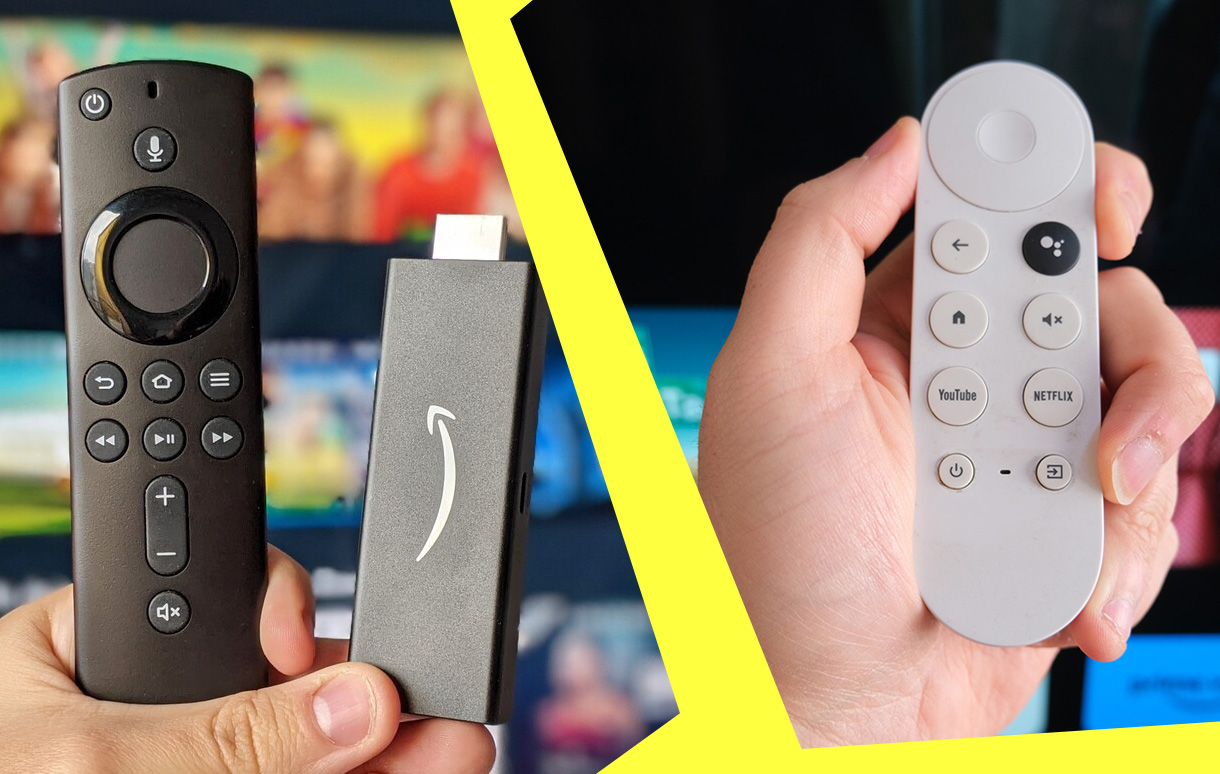Streaming devices have become a household essential, offering unparalleled convenience and entertainment. Among the top contenders are Fire Stick and Google TV, both promising robust features and seamless streaming experiences.

Choosing between these two platforms can be tricky, so let’s break down their specifications, software capabilities, and more to help you make an informed decision.
Key Takeaways
| Feature | Fire Stick | Google TV |
|---|---|---|
| Operating System | Fire OS | Google TV |
| Resolution Support | 4K UHD, HDR10+, Dolby Vision | 4K UHD, HDR10+, Dolby Vision |
| Storage | 16GB | 8GB |
| Smart Home Integration | Alexa-compatible devices | Nest devices |
| Wi-Fi Standard | Wi-Fi 6 | Wi-Fi 5 |
| Price Range | Affordable ($30-$60) | Affordable ($30-$50) |
| Best For | Amazon users | Google ecosystem users |
When deciding between Fire Stick and Google TV, it’s crucial to consider what matters most: user interface, content accessibility, ecosystem compatibility, and performance. Each device caters to specific needs, making this comparison a must-read for anyone seeking the ideal streaming companion. Let’s dive into the details to uncover which device is perfect for you.
Key Specifications Comparison
Operating Systems
The Fire Stick runs on Fire OS, a modified version of Android with a heavy focus on Amazon Prime Video. It integrates seamlessly with Alexa, providing voice control for playback and smart home devices.
Google TV operates on Android TV’s evolution, prioritizing intuitive navigation and comprehensive search functionality. It excels in personalized content recommendations, adapting to your viewing habits.
Hardware Features
- Storage: Fire Stick boasts 16GB of storage, doubling Chromecast’s 8GB, which can be a deciding factor for users who frequently download apps.
- Remote Control: Fire Stick’s remote includes shortcut buttons for popular apps and Alexa voice integration. Chromecast with Google TV also includes a remote with Google Assistant functionality but lacks dedicated app buttons.
- Wi-Fi Support: The Fire Stick supports Wi-Fi 6, ensuring faster connectivity and reduced buffering. Google TV, on the other hand, supports Wi-Fi 5, which may slightly lag behind in terms of performance.
Software Features and Ecosystem
Google TV: Multi-Service Integration
Google TV’s standout feature is its “For You” recommendation engine, which consolidates suggestions from multiple platforms like Netflix, Disney+, and Hulu. It also provides superior casting capabilities for those embedded in Google’s ecosystem.
“Google TV excels in offering an ecosystem-agnostic interface that appeals to a broader audience,” notes a tech reviewer from Digital Trends.
Fire Stick: Amazon-Centric Features
While Fire Stick integrates well with streaming apps, its interface heavily emphasizes Amazon Prime Video. It also introduces unique features like Live View Picture-in-Picture, which lets you monitor security cameras while streaming.
Smart Home Integration
Google TV pairs seamlessly with Nest devices, while Fire Stick works best with Alexa-enabled devices. Depending on your smart home setup, this could be a critical factor in your decision-making.
Ease of Use
Both devices offer user-friendly interfaces, but the Fire Stick leans towards Amazon-centric recommendations, which might not appeal to all users. Google TV, with its minimalist design and intuitive controls, has an edge in navigation. For first-time users, Google TV might feel more approachable.
App Availability
- Fire Stick offers a wider array of apps natively through its app store. However, some niche services may require side-loading.
- Google TV’s flexibility in casting from mobile devices ensures that even unsupported apps can be accessed with ease.
| Apps Exclusively on Fire Stick | Apps Exclusively on Google TV |
|---|---|
| Freevee | YouTube Cast |
| IMDb TV | Stadia |
Performance
Streaming Quality
Both devices support 4K UHD, HDR10+, and Dolby Vision, delivering stunning visuals. Dolby Atmos ensures immersive audio on both platforms, but the Fire Stick’s Wi-Fi 6 offers a slight edge in buffering speed.
Case Study: Streaming Under Poor Wi-Fi Conditions
A tech reviewer from TechRadar tested both devices in a low-signal environment:
- Fire Stick maintained smoother playback due to Wi-Fi 6.
- Google TV experienced occasional buffering but performed well overall.
Price and Value
Both devices fall within the $30-$60 range, making them affordable options. Fire Stick often runs discounts during Amazon sales, while Google TV bundles with Chromecast are similarly competitively priced.
Pros and Cons
Google TV
Pros:
- Superior content recommendations.
- Wide compatibility across ecosystems.
- Exceptional casting features.
Cons:
- Limited native storage.
- Wi-Fi 5 may lag behind.
Fire Stick
Pros:
- Expanded storage capacity.
- Excellent Alexa integration.
- Competitive pricing during sales.
Cons:
- Amazon-centric UI.
- Casting limitations.
Conclusion
Choosing between Fire Stick and Google TV boils down to your priorities:
- If you value Amazon Prime integration and superior Wi-Fi performance, the Fire Stick is the clear winner.
- If you’re a fan of personalized recommendations and Google’s ecosystem, Google TV shines as the better option.
Ultimately, your decision should align with your streaming preferences, smart home setup, and budget constraints. Both devices deliver exceptional value, ensuring a fantastic entertainment experience for all users.
Also Check:
